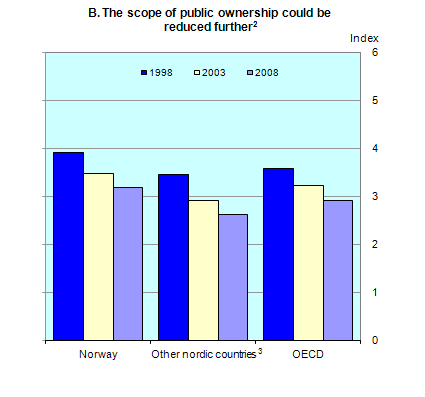挪威: Norway Finance Profile 2012
2012/03/22
Norway Finance Profile 2012
Fiscal policy
Monetary and financial sector policies
Against this backdrop, financial sector policies should support a gradual reduction in vulnerabilities. Specifically:
- We welcome the guidelines issued by the Financial Supervisory Authority (FSA) earlier this year to tighten credit standards for mortgage lending, given risks in the housing sector. Looking ahead, it will be important to carefully evaluate the effectiveness of this measure and further adjust prudential standards as necessary.
- In the same vein, the FSA should maintain pressure on financial institutions to bolster capital—including by restraining dividend payouts—and improve liability structures, with reduced reliance on short-term wholesale funding. Further progress in strengthening balance sheets will prepare banks for tighter regulatory requirements in the future, while building extra buffers to deal with financial stability risks.
- These efforts should be supported by a gradual reduction of the very large tax subsidy for housing (offset by tax reductions elsewhere), as the subsidy promotes overinvestment and high mortgage debt while disproportionately benefiting higher-income households.
The outlook for the Norwegian economy has worsened, the prime minister and central bank governor said on Tuesday as the International Monetary Fund cut its forecast and said the euro zone crisis could hurt exports.
The government of the oil-rich Nordic country had expected the economy, excluding activity from the oil and shipping sectors, to grow 3.1 percent in 2012, up from a forecast 2.8 percent growth in 2011.
"The government will cut the 2012 growth forecast for the Norwegian economy," Prime Minister Jens Stoltenberg told reporters on Tuesday, after meeting with business and trade union leaders to discuss the European debt crisis and its impact on Norway.
Stoltenberg did not say how much lower economic growth was projected to be, nor did he say why the government was cutting its forecasts. The new forecast, he said, would be presented in a forthcoming revised budget.
The Nordic nation of 4.9 million inhabitants is not a member of the European Union, but its export-oriented industries are highly dependent on European demand.
It survived the 2008 financial crisis relatively unscathed due to its booming oil sector and a cushy budget surplus fuelled by its half-trillion-dollar sovereign wealth fund but there have been signs that the latest global economic turmoil are hurting Norway.
OUTLOOK HAS SLIGHTLY DETERIORATED
The head of the central bank said Norway's growth outlook had deteriorated since its last assessment in October, but that the changes had been slight and that it was too early to revise official projections.
Oeystein Olsen added that both positive and negative events have impacted the global climate since October and more data would be required before the bank made its next interest rate decision Dec. 14.
"I would resist any attempt to summarise the picture as a basis for future interest rates," Olsen said on the sideline of a conference.
"To summarise, on an ad hoc basis, the information we have received since Oct. 19 has been slightly more negative than our projections."
The bank's key policy rate is 2.25 percent, and it has said last month it could stay there "for a long while". In a newspaper commentary on Monday, Olsen said the bank was prepared to cut rates if funding for Norwegian banks were to dry up.
He said on Tuesday the European agreement to help Greece shoulder its debt load was "positive," but said Europe's EFSF bailout fund needed more firepower to stop the crisis spreading to Italy.
EURO-ZONE CRISIS TAKES TOLL
Earlier on Tuesday, the IMF said it saw growth of 2.5 percent in Norway's economy both this year and next. It said last year the Norwegian economy would grow between 2.5 percent to 3 percent in 2011.
The Washington-based lender did not provide a reason for the lower forecast but said Norway could suffer from turmoil in the euro zone.
"Severe (eurozone) stress would undoubtedly affect Norway via shaken consumer confidence, lower exports to Europe, lower oil prices, and strains in international interbank markets-a key funding source for Norway's largest banks," it said in a statement.
The IMF also said Norway was at risk of a house price bubble due to rising prices and high-level of household debt.
Norway's economy excluding its flagship oil sector slowed in the third quarter, the latest figures by the country's statistics office showed on Tuesday. ($1 = 5.8199 Norwegian crowns) (Additional reporting by Camilla Knudsen in Oslo and Balasz Koranyi in Jevnaker; Writing by Gwladys Fouche; Editing by Anna Willard)




- 相关文章
-
挪威财经概况
2012/07/10 更多
-
- 挪威 News
-
- 阿富汗: 全球和平指数:约旦列中东北非地区第七
- 白俄罗斯: 欧盟自行车行业2015年数据发布
- 挪威: 挪威海事业概况
- 挪威: 挪威信息通信技术产业发展探究
- 挪威: 挪威养老基金概况
- 安哥拉: 挪威国家石油公司出售所持安哥拉油块权益
- 热门文章
-
- 约旦: 约旦农产品出口受到沙特卡塔尔边境关闭影响
- 墨西哥: 墨西哥哈里斯科州蓝莓首次出口中国
- 阿富汗: 世界银行将向阿富汗提供5.2亿美元无偿援助
- 亚洲: 5月泰国出口总增13.2%
- 亚洲: 全球广告市场将突破5千亿美元
- 非洲: 非洲今明两年经济增长将加速









